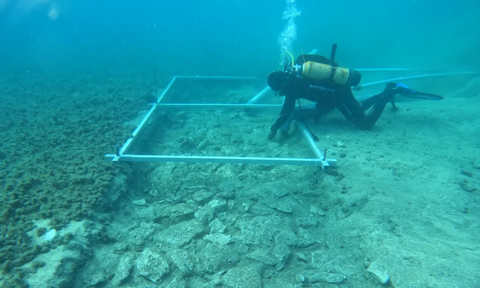
History enthusiasts, listen up! A significant discovery dating back thousands of years ago has gotten archaeologists excited. A road built 7,000 years ago has been discovered at the bottom of the Mediterranean Sea.
The remains of the Stone Age road have been discovered at the submerged Neolithic site of Soline, off the Croatian coast, near the island of Korčula. According to the researchers, this ancient road once linked the island to a settlement that sat on an artificial landmass but now lies some four to five meters beneath the Adriatic Sea in the Mediterranean.
This ancient site, called Soline, was discovered in 2021 by researchers at the University of Croatia after they noticed unusual structures at the bottom of the sea in satellite images. Upon diving and taking a closer look, they discovered a proper settlement, complete with Neolithic tools. While the artefacts found at the site date back to 4,900 years ago, the researchers have confirmed that the road was built around 7,000 years ago.
Much like Soline, the ancient road was protected from damage for all these years because of the islands surrounding the area.
At around four meters wide, the road was constructed using carefully stacked stone slabs. Today, it’s covered by a thick layer of mud as is expected from any underwater structure.
Not just this, the same research team discovered another underwater settlement on the opposite side of the island that is strikingly similar to Soline. Scientists discovered some intriguing Stone Age artefacts from this site as well, including blades and axes and were concluded to be a part of the Hvar culture, much like Soline’s finds.
These exciting finds have thrown light on how early humans could adapt to different environments and build roads between them.
- Quick links
- history
- Archaeologists
- research






